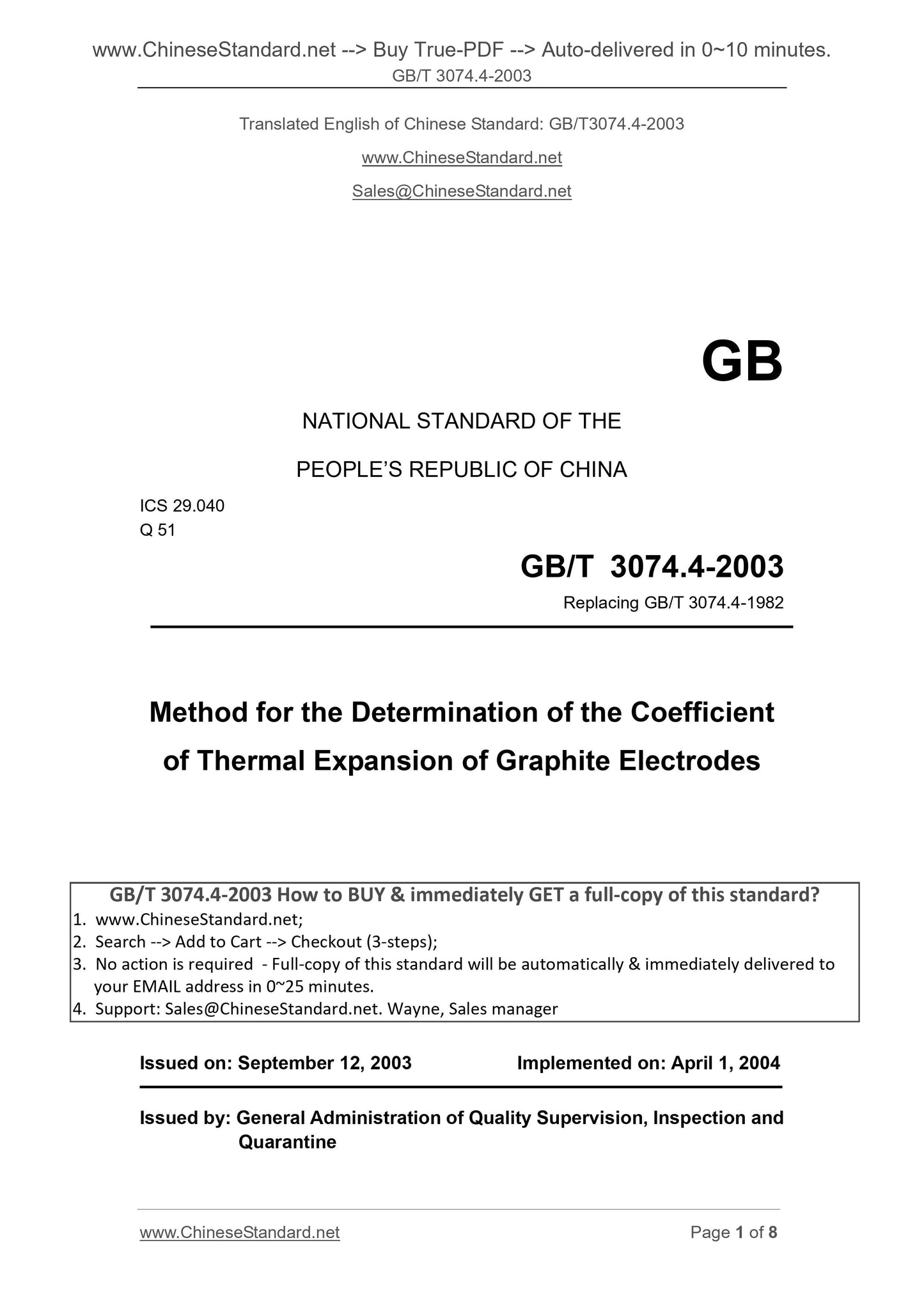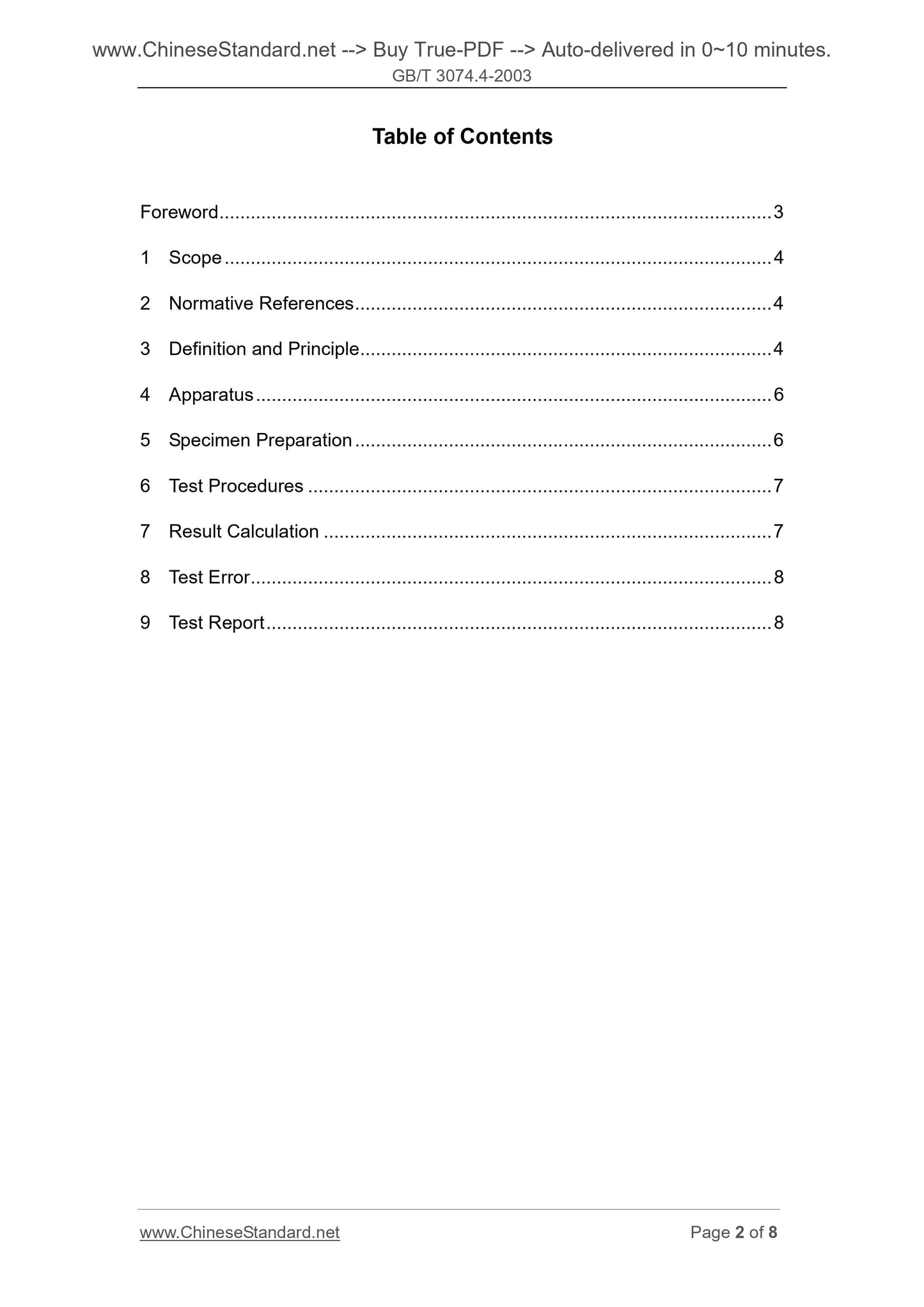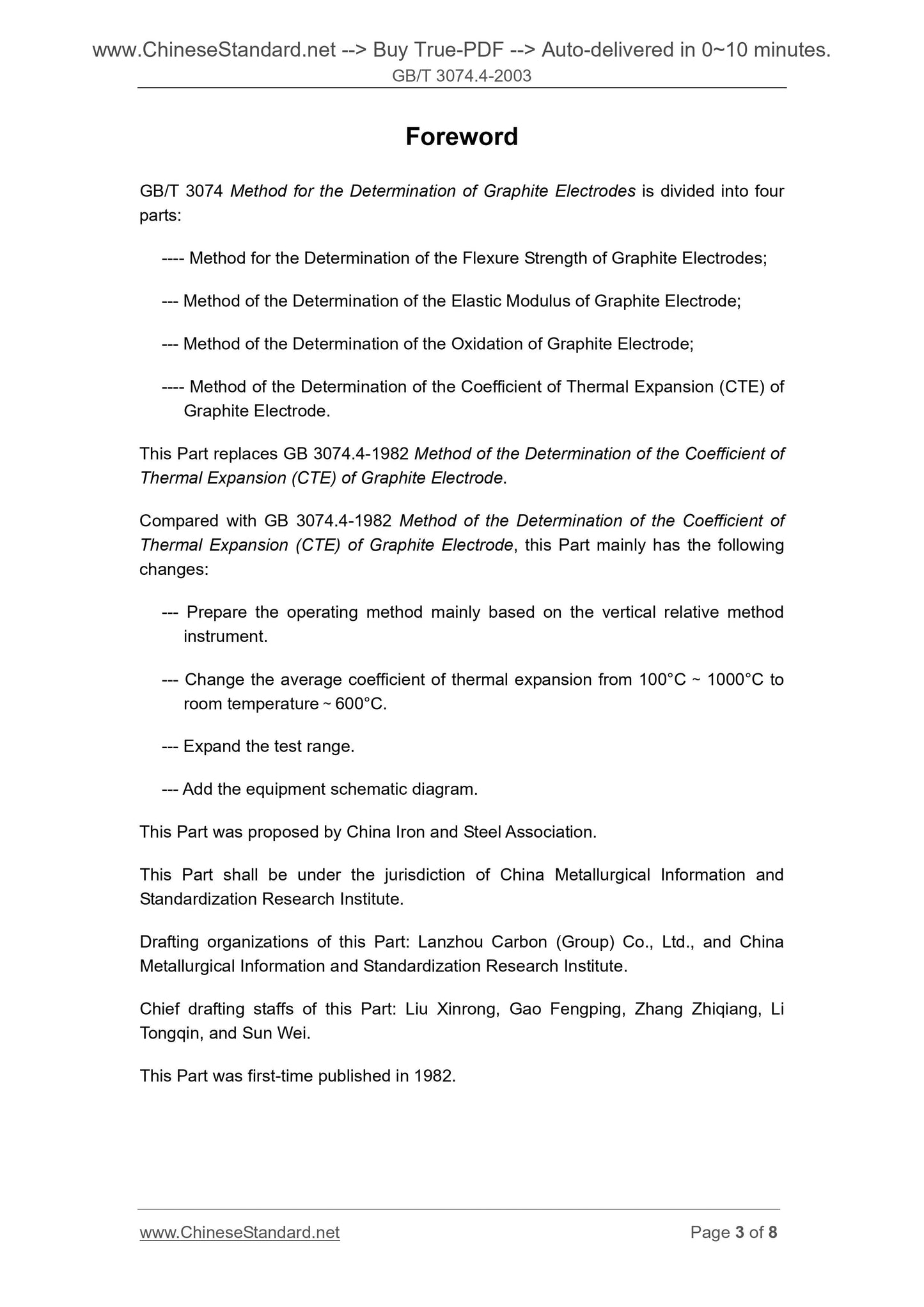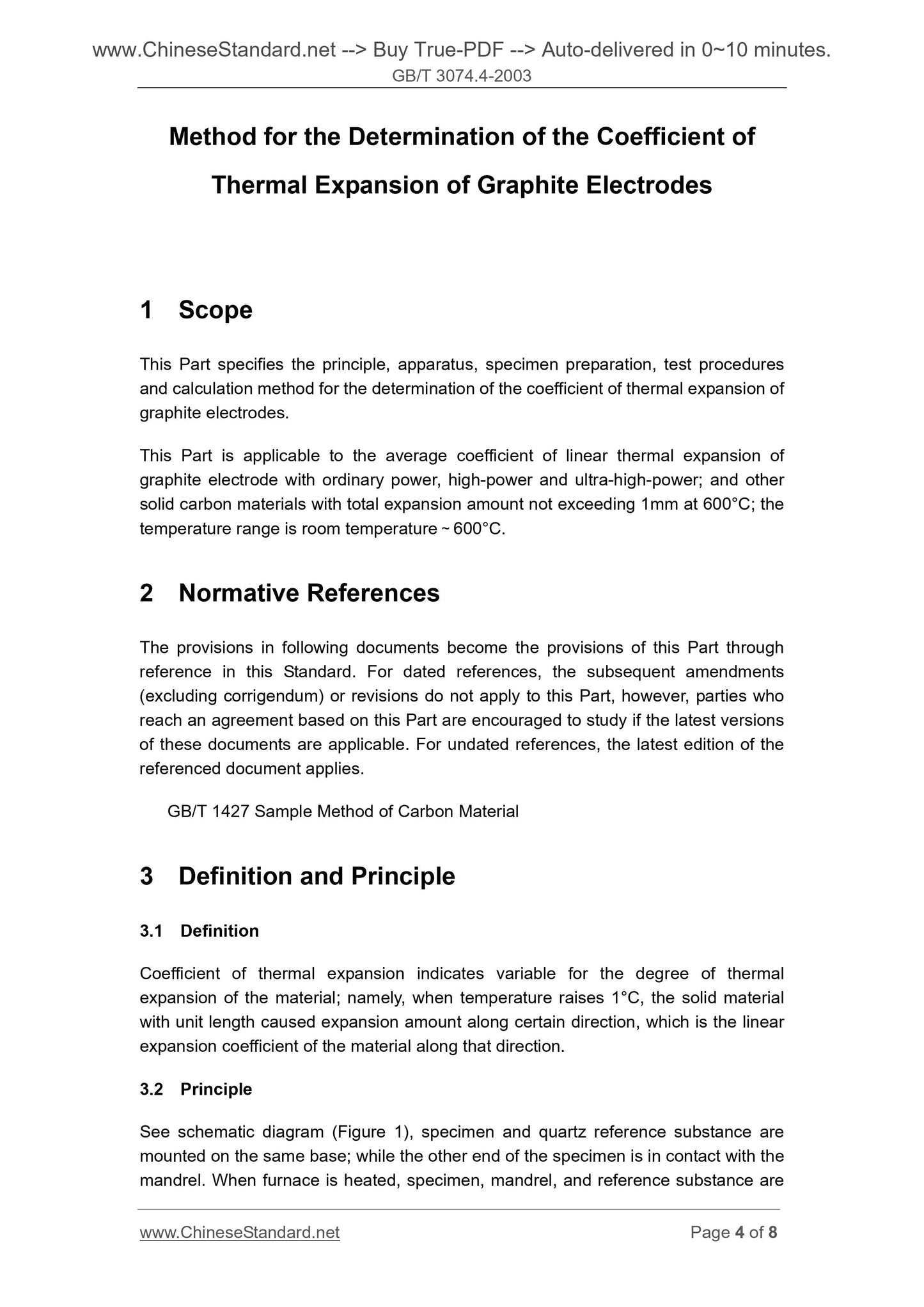1
/
of
4
PayPal, credit cards. Download editable-PDF & invoice In 1 second!
GB/T 3074.4-2003 English PDF (GB/T3074.4-2003)
GB/T 3074.4-2003 English PDF (GB/T3074.4-2003)
Regular price
$90.00
Regular price
Sale price
$90.00
Unit price
/
per
Shipping calculated at checkout.
Couldn't load pickup availability
GB/T 3074.4-2003: Method for the determination of the coefficient of thermal expansion of graphite electrodes
Delivery: 9 seconds. Download (and Email) true-PDF + Invoice.Get Quotation: Click GB/T 3074.4-2003 (Self-service in 1-minute)
Newer / historical versions: GB/T 3074.4-2003
Preview True-PDF
Scope
This Part specifies the principle, apparatus, specimen preparation, test proceduresand calculation method for the determination of the coefficient of thermal expansion of
graphite electrodes.
This Part is applicable to the average coefficient of linear thermal expansion of
graphite electrode with ordinary power, high-power and ultra-high-power; and other
solid carbon materials with total expansion amount not exceeding 1mm at 600°C; the
temperature range is room temperature ~ 600°C.
Basic Data
| Standard ID | GB/T 3074.4-2003 (GB/T3074.4-2003) |
| Description (Translated English) | Method for the determination of the coefficient of thermal expansion of graphite electrodes |
| Sector / Industry | National Standard (Recommended) |
| Classification of Chinese Standard | Q51 |
| Classification of International Standard | 29.040 |
| Word Count Estimation | 4,474 |
| Date of Issue | 2003-09-12 |
| Date of Implementation | 2004-04-01 |
| Older Standard (superseded by this standard) | GB/T 3074.4-1982 |
| Regulation (derived from) | Chinese national standard approved by the announcement in 2003 No. 12 (No. 60 overall) |
| Issuing agency(ies) | General Administration of Quality Supervision, Inspection and Quarantine of the People Republic of China |
| Summary | This standard specifies: the thermal expansion coefficient of graphite electrodes Determination of principles, equipment, specimen preparation, test procedures and calculation methods. This standard applies to: general power, high-power, ultra-high-power graphite electrodes and the total amount of expansion at 60, When �� not exceed, mm-other solid carbonaceous material, temperature range of room temperature ~ 60, �� average linear expansion coefficient. |
Share







